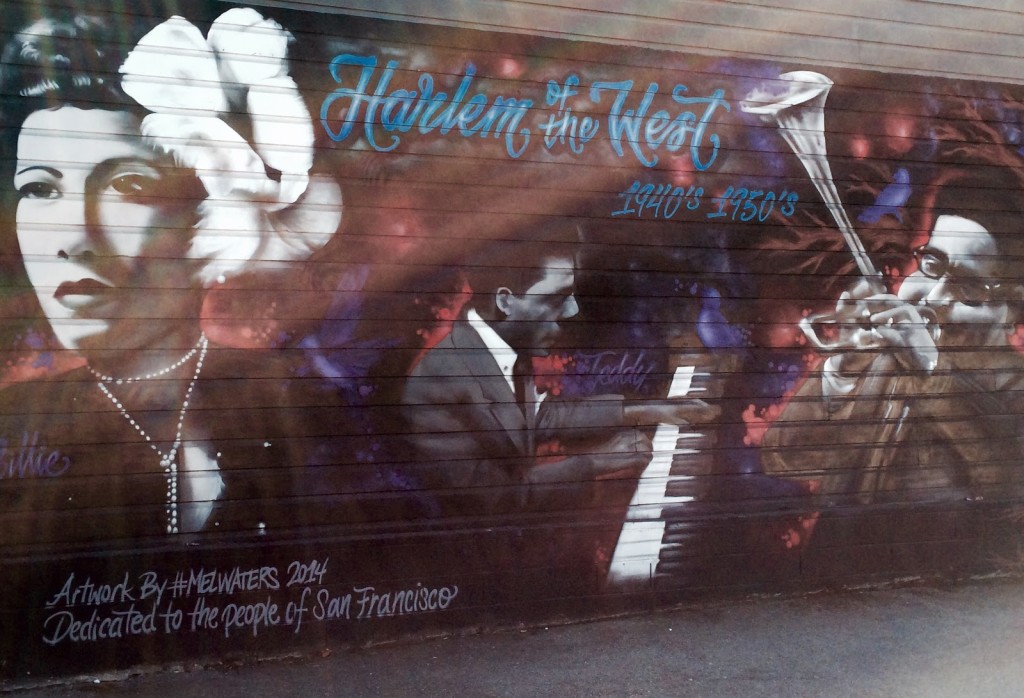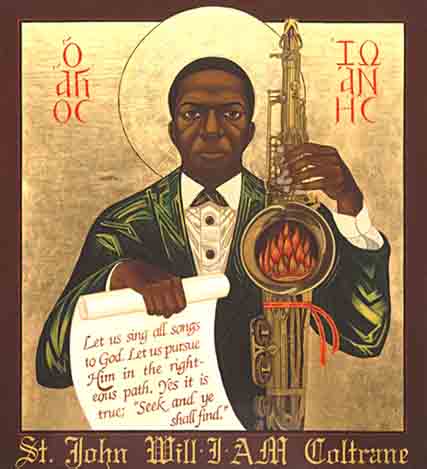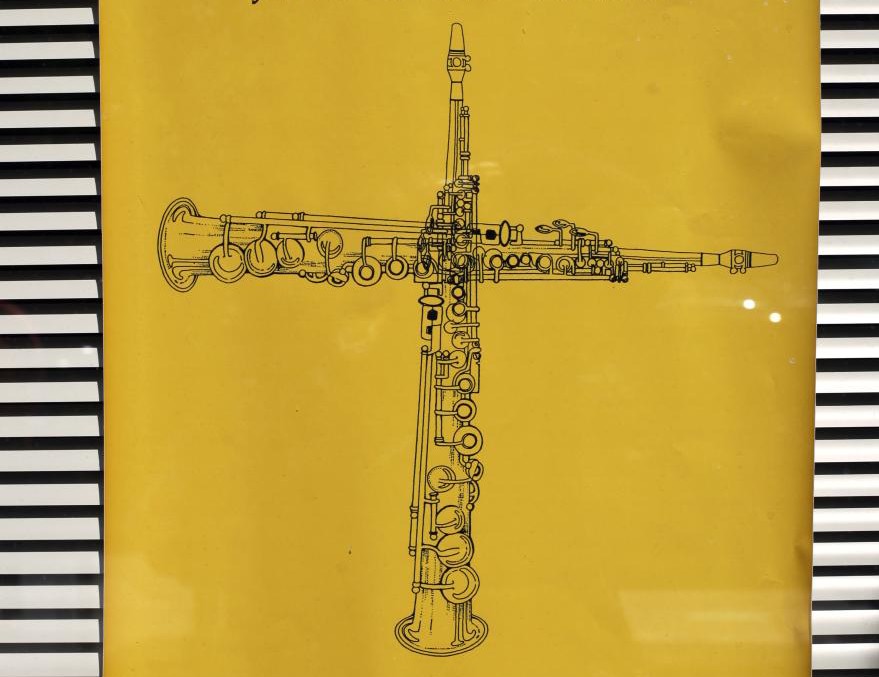I live in San Francisco with my boyfriend in a (formerly) predominantly black neighborhood called the Western Addition. I am black and reminiscent of the neighborhood’s past. My boyfriend is white and of the neighborhood’s present, although unlike some of his peers, he recognizes there was a community of people who before he moved in lived, loved and died here.
Remnants of the soul of this neighborhood still exist in the barbershops and now half-empty churches that dot the main street. I pass the barbershops, give the obligatory black nod to the few and make my way past the ubiquitous, overpriced coffee shops on the street to the Ethiopian drip spot that makes me happy.
I serendipitously discovered it–no Columbus–a few months ago when walking on Fillmore St., a historic street in our part of town that was once called the “Harlem of the West”. Coltrane Church, a place I’d heard about and wanted to go to since hearing about it last year.
The church is in a storefront and I would have walked by were it not for the music that paraded from inside like so many odes to joy. I bookmarked it in my head to return later.
When my beau and I finally visited, we were greeted by beautiful icons of black Jesus, Mary, and yes, Saint John Coltrane. The rich, vibrant colors evoked royalty and the mystical.
We sat in a back row of chairs behind an older white guy who looked like he was familiar with what was about to go down. We thought we were ready. I thought that we were prepared for what would happen next after we were told that “A Love Supreme” formed the liturgy.
But then, the music came, and to my surprise, an older white woman began to tap dance with so much determination and purpose I thought she was going to hurt herself – a pure expression of ecstasy. An older black man on the saxophone reminded the congregation that David danced. This emboldened her even more. She was soon joined on the piano by a younger white man who was already immersed in the moment, and then by a saxophonist who looked like some sort of patriarch and finally by drums. A few women who looked like they could be my cousins danced and played whatever instrument was nearby. When I was handed a tambourine to join in, the church began to feel like home, and I a long-lost relative. I read prayers roughly to the melodies of arguably Coltrane’s greatest work. The show of jazz here made me realize how so much of the experience of going to any black church is jazz. It resides in the improvisation of the worship, whether it’s the leader of the choir, that one soprano, the piano player going off, the call and worship or the freedom to take from it what you will.
A cross section of San Francisco came in through that door while the service continued and the worshippers lead us through prayers sung to the tune of “Resolution”, “Pursuance”, and “Psalm”. First a group of trustafarians sat in front of us and listened. Then, a brother in a bright orange track suit and an orange and black fitted stood at the open door for a moment before entering. As the old saxophonist launched into his praise solo, he sat down, took off his hat and started vibing. Then an Asian guy, intrigued by the by now boisterous odes to joy coming from the small room, stood near the door, smiling. I was reminded of Kurt Vonnegut’s understanding of the power of jazz. He wrote, “Comedians and jazz musicians have been more comforting and enlightening to me than preachers or politicians or philosophers or poets or painters or novelists of my time. Historians in the future, in my opinion, will congratulate us on very little other than our clowning and our jazz.”
 The service progressed through Coltrane’s magnum opus finally building up to the familiar pattern of “Acknowledgement”. No words were needed for this prayer. Our tap dancing friend began again to hit out the notes and then the djembe beat out the rhythm and soon the weathered, yet rich voices of two older women began stating, slowly and confidently, “A Love Supreme, A Love Supreme”.
The service progressed through Coltrane’s magnum opus finally building up to the familiar pattern of “Acknowledgement”. No words were needed for this prayer. Our tap dancing friend began again to hit out the notes and then the djembe beat out the rhythm and soon the weathered, yet rich voices of two older women began stating, slowly and confidently, “A Love Supreme, A Love Supreme”.
That this needle of joy, eccentricity, and blackness exists in a haystack of gentrification and increasing blandness gives me hope that San Francisco will retain some bit of its soul, if only in this little church, as long as it has the blessing of the Love Supreme. Blacks made up 13.4% of San Francisco’s population in 1970. Today that percentage is less than six percent.
These outwardly disparate sojourners had all ended up at this church for various reasons, like all houses of worship. Some, like me, were probably just curious. Others wanted to see the spectacle of it. One woman filming the service – I have no idea if she had permission – another taking photos of the beautiful icons in the house of worship before the service began. And yet, everyone seemed to find something there that pulled them in and compelled them to stay for whatever part of the service they did. The fact that “A Love Supreme” and John Coltrane’s life resonate with so many people, both religious and nonreligious, makes me think it’s not so off-base to consider him a saint. For what is a saint, except someone who brings you closer to your God?

